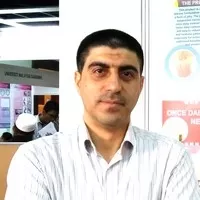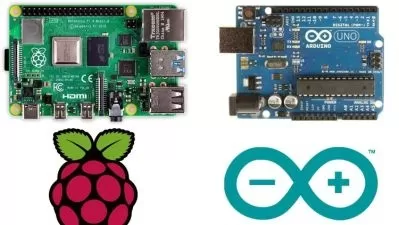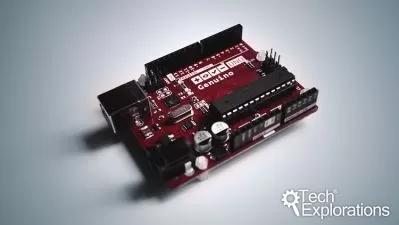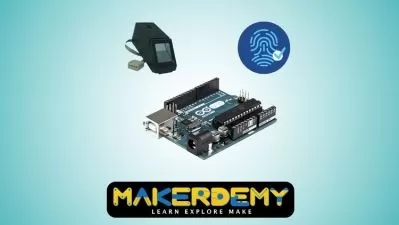DIY Lab Equipment with Arduino - Part 1: The Basics
Abd Almonem Doolaanea
3:12:04
Description
Understand Arduino Microcontrollers and Build Your First Project
What You'll Learn?
- Understand Arduino hardware and software (Arduino IDE)
- Work with sensors and modules and write the code with minimal programming skills
- Apply Arduino, sensors and modules to make your own DIY lab equipment
- Create complete automated lab equipment to measure, control and store the data using SD card and IoT using Google sheet (in the next courses)
Who is this for?
More details
DescriptionThis course is the first part of a series intended to understand Arduino microcontrollers and their sensors and off-shelf components and APPLY them in building lab equipment. This is the first part of the series where you get to know Arduino its similar board, ESP32. We will also go through the basics of the programming language and the common electronic components needed. We will jump quickly to the applications in making useful equipment.
The course is not intended to give you deep understanding of electronics or programming and coding. Instead, it will give you brief explanation, using plain language as possible, sufficient to let you understand what we are doing and how to benefit from the huge amount of examples and support available online.
Arduino is an open source hardware. It is programming software is also free and open source. The internet is full of examples and discussions. We do not intend to start coding from scratch. However, we will teach you where is to find the suitable resources and how to use them in your application.
If you are looking for quick application and customization of your experimental setup, this course suits you perfectly. If you are new to this field, this course is also suitable for you.
Who this course is for:
- Students and researchers looking to customize the experiments.
- Non-engineers looking to apply some automation in their activities.
- Chemistry, biology, physics, biomedical, medical, pharmaceutical lab students, researchers and staff who need to make DIY equipment
This course is the first part of a series intended to understand Arduino microcontrollers and their sensors and off-shelf components and APPLY them in building lab equipment. This is the first part of the series where you get to know Arduino its similar board, ESP32. We will also go through the basics of the programming language and the common electronic components needed. We will jump quickly to the applications in making useful equipment.
The course is not intended to give you deep understanding of electronics or programming and coding. Instead, it will give you brief explanation, using plain language as possible, sufficient to let you understand what we are doing and how to benefit from the huge amount of examples and support available online.
Arduino is an open source hardware. It is programming software is also free and open source. The internet is full of examples and discussions. We do not intend to start coding from scratch. However, we will teach you where is to find the suitable resources and how to use them in your application.
If you are looking for quick application and customization of your experimental setup, this course suits you perfectly. If you are new to this field, this course is also suitable for you.
Who this course is for:
- Students and researchers looking to customize the experiments.
- Non-engineers looking to apply some automation in their activities.
- Chemistry, biology, physics, biomedical, medical, pharmaceutical lab students, researchers and staff who need to make DIY equipment
User Reviews
Rating
Abd Almonem Doolaanea
Instructor's Courses
Udemy
View courses Udemy- language english
- Training sessions 15
- duration 3:12:04
- Release Date 2022/12/14











